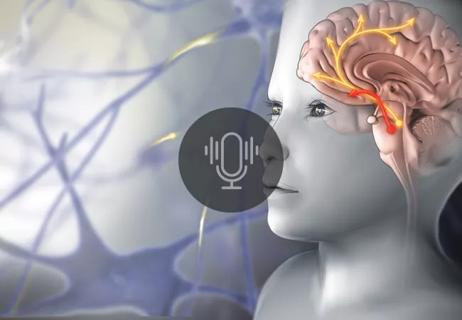Program has facilitated nearly 300 consults across 25 departments in less than a year

Cleveland Clinic Children’s is connecting pediatric providers to pediatric specialists through a telephone consultation program, the CARE Line.
Advertisement
Cleveland Clinic is a non-profit academic medical center. Advertising on our site helps support our mission. We do not endorse non-Cleveland Clinic products or services. Policy
Internal and external providers can reach the CARE Line (216.444.PEDS) from 8 a.m. to 4 p.m. Monday through Friday to speak with a dedicated staff member who triages the request to the appropriate specialist from that practice area.
Wadie Shabab, MD, Vice Chair for Outpatient Operations at Cleveland Clinic Children’s and Medical Director, who is leading the initiative, says the response has been positive among its users and consulting specialists.
Since it launched in September 2021, the program has facilitated 300 consults from specialists across 25 different departments, resulting in more than 80 new appointments. Here’s how it works: The specialist receives the page, the treating provider’s contact information, and a general idea of urgency.
Dr. Shabab says, “It’s generally a quick consult, resulting in information sharing that brings the patient and family peace of mind or an opportunity to better streamline the plan of care, but it can also be a means of expediting treatment in a more emergent situation.”
William Mudd, DO, a pediatrician at Cleveland Clinic Children’s, has used the CARE line on numerous occasions in the last four months. In one particular case, he was able to consult several specialists, including those from neurology, epileptology, endocrinology and urology, about the best approach for evaluating a school-age child with a complex neurologic history who presented with urinary urgency, frequency, and new onset urinary incontinence.
“I was trying to determine the cause of these new urologic symptoms and decipher if they were related to the child’s medications, other possible endocrinologic or urologic pathologies, or perhaps new onset seizures,” says Dr. Mudd.
Advertisement
Discussing the child’s presentation with those four separate providers on the day of their visit streamlined care and saved the family from multiple outpatient appointments with specialists, associated wait times, and unnecessary lab work.
Dr. Mudd adds, “Most importantly, the family received answers and a game plan moving forward on the same day they were seen in the office and felt less in the dark about what was going on with their child.”
From the specialist perspective, Mohammed Aldosari, MD, a pediatric neurologist, says being involved earlier benefits the patient, the treating clinician, and the consulting team.
“We get an opportunity to hear directly from the primary care doctor, talk to them about their concern, and add input from the beginning, rather than having to manage an emergent situation or inconvenience the family by having to again refer them or request workup that could have been arranged prior to the visit had we known in advance.”
In a recent case, the primary care provider was trying to determine whether symptoms in a young child were related to a seizure disorder or a behavioral disorder.
“We were able to arrange an electroencephalogram and a much earlier appointment, which really expedited the diagnostic process while also avoiding an emergency department visit.”
Dr. Aldosari adds that early intervention is critical in neurologic disorders. “In neurological conditions, the ability to have direct dialogue beyond what is written in notes can really help with an earlier diagnosis.”
Advertisement
Seizures are one example, he explains, but this also applies to severe headaches and other symptoms that might be indicative of an aggressive pathology, like a brain tumor.
“You never want an initial presentation to be missed, but you also don’t want to overwhelm the ED or rush an initial appointment if the discussion is more reassuring. This service helps create efficiency, optimize use of resources, and provide a better experience for patients,” he says.
The pediatric neurology service has received among the most calls to date. Gastroenterology, infectious disease, hematology-oncology/bone marrow transplant, and endocrinology also top the list for frequently consulted areas.
Kadakkal Radhakrishnan, MD, a pediatric gastroenterologist and hepatologist, says he’s received several calls about babies with elevated bilirubin. He has provided counsel based on other clinical variables to help providers determine if the situation is emergent and explore possible differentials. In one case, the call helped facilitate an admission for pancreatitis.
In terms of time commitment, he says it has become part of his routine. “This is how I approach it: if it’s something urgent and I am in the middle of seeing patients, I try to find time in the next 5, 10 or 15 minutes to return the call.”
He stresses that the connectivity between the pediatrician and the specialist improves trust and communication among colleagues that ultimately benefits the patient and their family.
Dr. Mudd encourages primary providers to utilize the service.
Advertisement
“My biggest hesitation was fear of a timely response, but this has never been the case. I am asked if the consult question is urgent or nonurgent. If it’s urgent, a specialist calls back within 15 minutes and if nonurgent, they will call by 5 p.m. that day. I have found it to be an effective and efficient service that benefits our patients greatly.”
Providers can reach the CARE Line at 216.444.PEDS from 8 a.m. to 4 p.m. Monday through Friday. Please note, this line is for providers only, and patients will be redirected to the general appointment line.
Advertisement
Advertisement

Specialized clinic provides comprehensive care for pediatric patients with a high-risk history

Research aims to understand factors to help standardize practices

Specialists in the growing specialty are well-positioned to foster seamless, high-value care

Programs bring age- and size-appropriate technology to children

Physician shares key considerations and other resources

Diet has a profound impact on how the intestine functions

5 things a child psychiatrist wishes all pediatricians would do

How functional restoration can help children with these conditions marked by unexplained pain with stigmatized symptoms